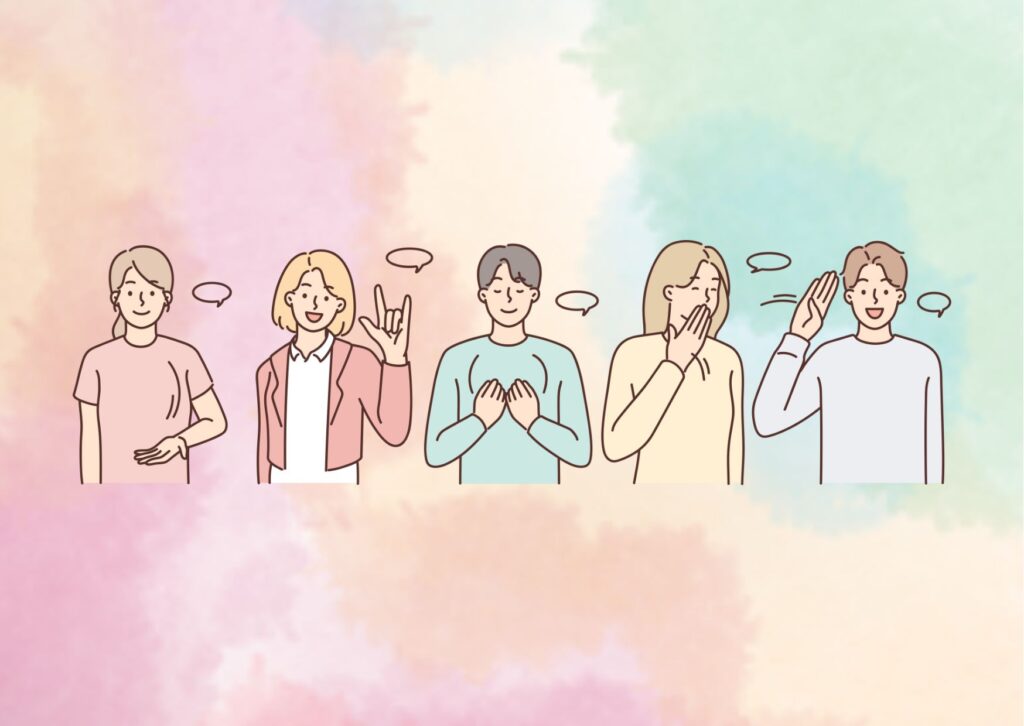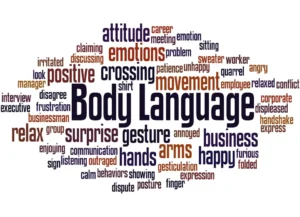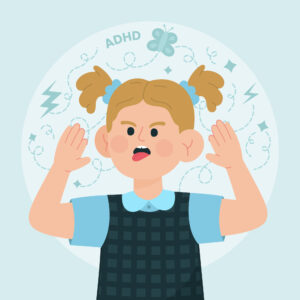
Why Kids with ADHD Struggle with Social Cues
Children diagnosed with ADHD face more than just challenges with attention, focus or hyperactivity. One of the often‑overlooked difficulties is interpreting and responding to social cues—the subtle verbal and non‑verbal signals that guide our social interactions. These cues include things like facial expressions, tone of voice, body language, waiting your turn, sharing the conversation. When a child misses or misreads these cues, it can lead to misunderstandings, peer rejection, frustration and low self‑esteem.
In this article we’ll explore:
- What social cues are and why they matter
- How ADHD specifically affects a child’s ability to perceive and respond to social cues
- The impact of these difficulties on friendships, school and everyday life
- Common underlying mechanisms (sensory, attentional, executive function)
- Practical strategies and how occupational therapy (OT) supports children with ADHD in this area
- Tips for parents, teachers and children themselves
Let’s begin by defining what we mean by social cues.
What Are Social Cues — and Why They Matter
Social cues are the signals we send and receive in interpersonal interaction. These can be in the form of:
- Non‑verbal cues: facial expressions, gestures, posture, body orientation, eye contact
- Paraverbal cues: tone of voice, rhythm of speech, pauses
- Verbal cues: the content of what is said—but even here the meaning is dependent on context and delivery
These cues help us interpret how someone else is feeling, what they intend, when a turn in the conversation is expected, how to respond appropriately.
When children miss or misinterpret these cues they may:
- interrupt at the wrong time
- talk when others are talking
- misread a peer’s frustration as friendship
- fail to notice that someone is losing interest
- struggle to join or sustain group play
Because social interaction is a dynamic process, even small mis‑steps can accumulate and lead to repeated misunderstandings, peer rejection, or isolation. Research notes that many children with ADHD have difficulty recognising body language and tone of voice, key parts of social awareness.
How ADHD Affects Social Cue Recognition
Let’s break down the ways in which ADHD contributes to difficulties with social cues.
- Inattention & Impulsivity
Children with ADHD often struggle to sustain attention in conversations or social settings. They may become easily distracted, miss parts of what was said, or fail to notice subtle cues because their focus shifts.
Impulsivity means a child may speak out of turn, jump into conversations, interrupt peers, or act without pausing to interpret cues. This behaviour may be perceived by others as rude or insensitive even when the child didn’t intend it.
- Executive Function Weaknesses
Beyond basic attention and hyperactivity, many children with ADHD have deficits in executive functions (planning, self‑monitoring, flexibility). These skills are essential for effective social interaction: pausing to think, monitoring one’s own behaviour, adapting when conversation shifts, recognising when to stop speaking. Without those regulatory functions, even if the child “knows” social rules they may fail to apply them reliably.
- Pragmatic Language and Social Communication
“Pragmatic language” refers to how we use language in social contexts: taking turns, changing style of speech depending on listener, interpreting humour or figurative language, recognising non‑literal intent. Research shows children with ADHD often lag in pragmatic language ability compared to peers.
This means even when the verbal content is fine, the social “packaging” is off: e.g., the child may use a tone or gesture that signals boredom, may miss that a peer is signalling “I’m done talking”, may fail to shift topic when appropriate.
- Emotional & Self‑Regulation Challenges
Social interaction often involves managing one’s emotions: handling an unseen frustration, waiting, tolerating teasing, noticing subtle rejection. Children with ADHD frequently struggle with emotional regulation, which reduces their capacity to respond smoothly to social cues. Moreover, heightened sensitivity to rejection (often called rejection‑sensitive dysphoria) may amplify reactions when social interactions go wrong.
- Sensory & Social Overload
In busy social settings (playground, group games, classroom discussions) children face multiple inputs: shifting voices, body language, movement, visual cues. For a child with ADHD, processing multiple sensory channels while also monitoring social cues can be overwhelming. This may lead to “checking out”, missing the cues altogether, or reacting inappropriately.
Impact of Missing Social Cues – Why it Matters
When children with ADHD struggle with social cues, the consequences ripple across their lives.
Friendship formation & peer acceptance
Children may find it harder to join groups, sustain conversations, or respond in ways that establish rapport. For example, if the child interrupts or fails to read that a peer is done talking, peers may see them as insensitive or domineering. Over time this may lead to peer rejection or being excluded from games and friendships.
Self‑esteem and emotional well‑being
Repeated experiences of being misunderstood or socially excluded can erode confidence. The child may begin to avoid social situations, which limits practice of social skills and further weakens them. The cycle of expectation → social misstep → peer rejection → reluctance to engage is well documented.
Academic and classroom functioning
Social competence matters in class too: working in groups, paying attention to peer or teacher cues, participating appropriately. A child who misses cues about when to ask a question or when to stop talking may struggle with classroom norms, leading to behavioural or social issues in school.
Long‑term relational outcomes
Social skill deficits in childhood can extend into adolescence and adulthood, affecting peer relationships, romantic relationships, job performance, and social adjustment. Studies indicate that children with ADHD may carry social difficulties into later life unless addressed.
Root Causes of the Struggle: A Closer Look
Understanding why these difficulties arise helps occupational therapy tailor effective interventions. Here are key root causes:
Processing speed and attention filtering
Children with ADHD may have slower or inconsistent processing of social information. They may struggle to filter out irrelevant stimuli and focus on the relevant cues (tone of voice, gesture) while ignoring background noise. This makes it harder to detect subtle social signals.
Working memory limitations
Holding in mind the thread of a conversation, remembering what the peer just said, monitoring your own response—all this relies on working memory. If working memory is weak, the child may lose track of cues mid‑conversation, jump topics, or miss the shift in tone.
Difficulty shifting cognitive set
Social interaction is dynamic: a friendly chat might turn into a game; the mode shifts from listening to responding. Children who struggle with cognitive flexibility may not adjust smoothly, remaining in the wrong mode or missing the cue to shift.
Emotional dysregulation and reactive behaviour
When a child’s emotional responses are easily triggered, they may respond impulsively rather than reflectively. This undermines the pause/think/respond cycle that social interactions require. Emotional dysregulation thus complicates reading and acting on social cues.
Deficits in social‐pragmatic competence
As noted earlier, beyond “knowing” social rules, application in real time is challenging. Children with ADHD may have learned the rules academically but falter in automatically using them because of the demands of real‑life interaction (attention, working memory, inhibition).
Reduced opportunities for social practice
Because children with ADHD may face rejection or withdrawal from peers, they often have fewer natural opportunities to practice, refine and generalize social skills. This reduces the chance of growth and increases the gap relative to peers.
How Occupational Therapy Supports Children with ADHD in Recognising & Using Social Cues
Here’s where the role of OT becomes essential, particularly at a service provider like Haghighati Occupational Therapy Academy, which can integrate approaches addressing social cue recognition, processing and interaction.
Assessment & Individualised Goal‑Setting
An OT begins with assessing the child’s specific social‑communication profile: Which social cues are missed? Are the difficulties mainly verbal or non‑verbal? Is the child able to reflect on their social behaviour? Based on this, functional goals are set (e.g., “Child will wait their turn in a 3‑child conversation at least 80% of the time,” or “Child will identify peer’s gestures of boredom during play”).
Embedded, Real‑Life Social Interaction Practice
Rather than isolated social skills drills, OT embeds cue‑recognition and response practice within real or simulated play/school/social tasks. This may include role‑play games, group‐therapy play sessions, peer modelling, and socially interactive tasks that require attention to non‑verbal cues, turn taking, topic shifts.
Metacognitive Coaching & Reflective Strategies
OTs teach children to pause and think: “What is the other person doing or saying? What might that mean? What can I do next?” This self‑monitoring loop helps children consciously pick up cues rather than relying solely on automatic, intuitive processes that they may struggle with.
Environmental & Task Adaptations
To reduce overload and make cue‑recognition easier, OTs might adapt the social setting: shorter group sizes, fewer distractions, visual cue cards or icons to depict social signal meanings, structured peer‑interaction scripts. Over time supports are faded so children internalize the cues.
Sensory & Self‑Regulation Supports
Because social interaction requires internal regulation (attentional, emotional, sensory), OT may incorporate sensory strategies (movement breaks, calming input, body awareness) so the child is in a better state to perceive and respond. When regulation is achieved, cue perception improves.
Parent / Teacher Coaching & Generalisation Across Settings
Children need consistent support across home, school and peer environments. OTs train parents and teachers on how to cue children gently, reinforce correct social responses, model non‑verbal cues, and create opportunities for practice. Generalisation is key.
Data Monitoring & Progression
Through observations, checklists, and data tracking (how often child recognises cues, how often social missteps occur), the OT adjusts strategies: fading supports as child improves, increasing complexity of social situations, shifting from structured to unstructured peer interactions.
Practical Strategies & Tips for Parents and Educators
Here are actionable strategies that parents, teachers and children themselves can use to support social cue recognition and response.
- Visual Cue Cards & Social Signal Charts
- Create cards showing common non‑verbal cues (smile = friendly; folded arms = upset; tapping feet = bored)
- Use them as conversation starters; ask child “What might the person be thinking?”
- Review after social interactions to reflect and discuss
- Role‑Play & Rehearsal
- Teach turn‑taking scripts (“Hello, you’re up next; I will ask a question; you respond”)
- Rehearse scenario transitions: “When the teacher says ‘Okay, now share’, you wait your turn”
- Practice shifting topics: “If the other person looks away or says ‘uh‑huh’, maybe the topic is done”
- Simplified Social Stories
- Write a short narrative about a social situation where a cue is missed and show alternatives.
- Example: “When Ali keeps talking while Zara is silent, Zara may feel left out.”
- Review and discuss: What could Ali do differently?
- Break Down Social Signals into Concrete Steps
Many cues are subtle. Break them into explicit teaching:
- “When someone crosses their arms and sighs, it might mean they are upset or done talking”
- “If someone looks at the clock repeatedly, they may be bored or want to move on”
- Use predictable situations (group play, lunchroom, classroom) with pre‑teaching and review.
- Reinforce and Reward Small Successes
Catch and praise moments when the child correctly interprets or responds to a cue:
- “I noticed how you stopped when Maria seemed done talking and waited your turn. That was great.”
- Use a social success chart: track 3‑5 social interactions per day and reward progress.
- Teach Self‑Monitoring Questions
Before a social interaction, help the child ask themselves:
- “Am I making eye contact?”
- “Is the other person leaning in or leaning back?”
- “Have I been talking for too long?”
After, reflect: - “Did the other person smile or nod?”
- “Did the person ask me a question back?”
Gradually this becomes internalised.
- Provide Controlled Social Practice
Large groups = more unpredictable cues. Provide smaller, more structured social settings initially (1–2 peer playdates, supervised group tasks) then gradually increase complexity.
- Collaborate with School
Ensure teachers support:
- Cue the child when peers are shifting topics
- Use visual reminders of social rules in class
- Provide structured transition times between group work
- Monitor peer relationships and provide opportunities for success
Why Haghighati Occupational Therapy Academy Is the Right Partner
At Haghighati Occupational Therapy Academy, we specialise in working with children diagnosed with ADHD to enhance not only their attention and motor or sensory skills, but equally important, their social‑communication competence including social cue perception and response.
Here’s how we help:
- Conduct comprehensive assessment including social‑communication profiles
- Develop personalised goals tied to meaningful social tasks (friendships, group play, classroom interaction)
- Embed social cue training within real activities, play and peer interactions
- Provide parent and teacher coaching to reinforce skills across home and school
- Monitor progress through data and adapt supports as the child improves
- Emphasise generalisation: moving from structured sessions to real‑world peer interaction
By focusing on the whole child—attention, regulation, sensory modulation, executive function and social‑cue skills—we help your child become more confident, socially engaged and successful.
Conclusion
Struggling with social cues is a significant and often under‑recognised challenge for children with ADHD. Because social interaction is dynamic, subtle and multi‑modal, when children have deficits in attention, regulation, executive functioning, or pragmatic language, they are at higher risk of misunderstanding or missing those cues. The consequences—peer rejection, low self‐esteem, isolation—can ripple across many areas of life.
The good news is that with intentional support, real‑life practice and guided intervention, children can improve their social‑cue recognition and response. Occupational therapy, such as that provided by Haghighati Occupational Therapy Academy, plays a key role in helping children with ADHD not only cope, but develop stronger social competence and deeper, more satisfying peer relationships.
If your child is showing signs of difficulty in social situations—interrupting, missing body language, struggling to join in – don’t wait. Early assessment and intervention can change the trajectory.

